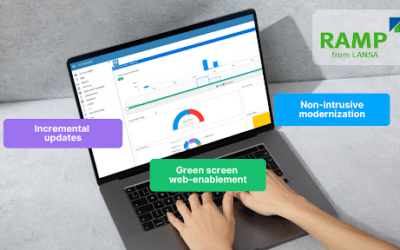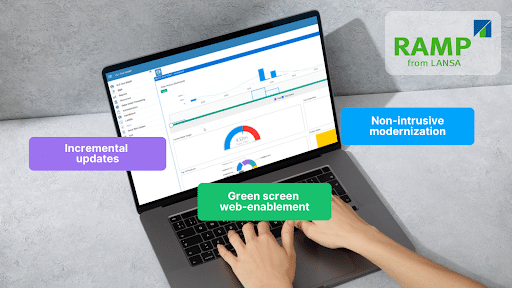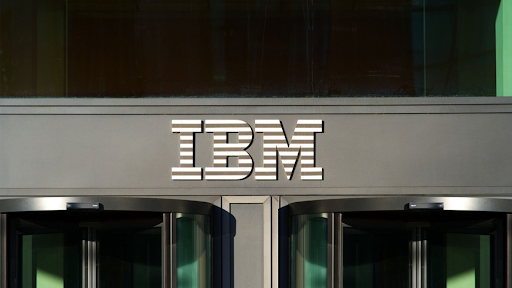Thanks for joining me for my final post on the 5 Guiding Principles of Enterprise Modernization. So far I’ve covered the importance of delivering the best user experience, improving data quality and accuracy and getting information into the hands who need it. My focus today will be on how to implement continuous business improvements and why you must build and inspire change within your organization.
P R I N C I P L E #4:
Implement Continuous Business Improvement
IT must be in sync with the goals of your business. When your current application stack grows stagnant, it’s difficult for your company to evolve. When business changes occur without IT’s support, users create workarounds, data stops flowing and the core system lags behind. By the time IT catches up, user workarounds have turned into bad habits that are hard to break and the business goals may have changed yet again.
 Businesses that are unable to react to changes will lose customers to more efficient and customer-friendly competitors. Organizations must develop and deploy software faster than before as they move toward a continuous delivery strategy where application updates are released quickly.
Businesses that are unable to react to changes will lose customers to more efficient and customer-friendly competitors. Organizations must develop and deploy software faster than before as they move toward a continuous delivery strategy where application updates are released quickly.
For example, Amazon wasn’t profitable for many years, but continued to improve its systems and internal processes while expanding its product offerings. In its continuous delivery approach, Amazon deploys new software into production every 11.6 seconds. Now the company has become the gold standard for customer service.
While you may never have to release software at the same pace as Amazon, modernizing your development tools, procedures and staff will shorten development cycles and increase application deployment frequency. Companies with modern development languages and tools are agile enough to keep up with the evolution of business and technology trends. Empower developers with the skills to build and deliver applications for any user interface. By allowing any developer to work on any project, pockets of programming expertise are eliminated.
When developing applications for a single platform and database, businesses face the risk of stagnation. You never know what the future may bring, so a sound development strategy must include the capability to deploy portions of applications to different operating systems and databases. This provides the flexibility to better preserve your technology investment by being portable and avoiding lock-in.
Consider Rapid Application Development (RAD) tools to help developers increase output and participate on any project. Agile development tools that are open and flexible enable developers to write code that runs free of any underlying operating systems, database technology or display style and future proofs all of your applications.
The CEO of a software company that provides point of sale solutions at more than 700 retail locations says, “There is old adage that when building systems, three factors are always desired— good, fast and cheap—but in reality, you can only pick two knowing that the third is the trade-off. For instance, it may be good and fast, but it won’t be cheap—or fast and cheap, but it won’t be any good. With RAD tools, we achieved all three. The deliverables are very good and the applications are built much faster than using traditional languages. And the end results are significantly cheaper than it would have cost using other methods.”
The pace of continuous business improvements can be delayed by ongoing maintenance requirements. Companies can reduce systems by incorporating a repository or rules-based architecture. This strategy allows developers to create and maintain common business rules and validation logic once, in a single location, and enforce the same business rules in every program. Not only does this reduce a company’s maintenance burden but it also reduces the amount of source code developers have to write.
P R I N C I P L E #5:
Build and Inspire With the Organization’s Vision
“With all the daily fires I fight, I sometimes lose sight of what I’m good at—effectively getting data into and out of the system for those who need it. Managing users, troubleshooting Windows, securing mobile devices, integrating disparate applications, synchronizing data and watching the backlog of system requests continue to grow is not what I signed up for when I took this job 18 years ago,” says an IT manager at a mid-sized manufacturing company.
When asked how to get back to doing what the manager was good at, the response was, “Every Wednesday morning, I take 30 minutes to walk among our office and warehouse workers, and every time I see someone typing I ask them what they’re typing and why. Then, I go back to my office and investigate how we can capture that data at the source. Fixing those problems, one at a time, makes my job so much more fulfilling than before.”
 As the manufacturing company found, it’s important to build synergy among people, processes and systems. Share the vision of the organization and work with employees to gather their contributions and requirements. Develop a team that’s aligned with and supportive of the vision.
As the manufacturing company found, it’s important to build synergy among people, processes and systems. Share the vision of the organization and work with employees to gather their contributions and requirements. Develop a team that’s aligned with and supportive of the vision.
Start by meeting with key personnel to review systems and applications as well as processes and procedures. Identify employees who work around the system. If their workaround is better, improve the system. If not, retrain and align the employees.
Documenting, structuring and automating manual business processes can bring many benefits. A North American manufacturer of automotive security products streamlined many manual business processes to save time. For example, the legacy process to unload a delivery truck and put items into the inventory system dropped from 162 minutes to 24. Additionally, allocating backorders fell from 100 minutes to 15 and printing and collating picking notes for packing orders plummeted from 60 minutes to five.
A Trusted Partner
While modernization is a noble and worthy endeavor, to be successful requires the right vision and the right partners. Think business first rather than technology first. This higher level of thinking allows you to focus your efforts on better supporting your customers and trading partners and increasing profitability. Doing so enables you to start looking at modernization in a new light.
Finding a trusted partner can help you adopt these five principles. Research is key. The best partner for true modernization is one with a high-level vision and also understands your business, as well as your short- and long-term goals. Your partner must take a holistic approach to software and process, and possess a proven track record of delivering a tailored strategy unique to your company. Be sure to have your partner connect you with other like-minded customers with similar needs and provide a working proof of concept as part of your evaluation. Your ideal partner will base its success on the success of your modernization project.
If you’re considering a modernization project I encourage you to learn more about LANSA. We work with companies facing a multitude of challenges and help them realign their current IT strategy and software suite to keep pace with the rapid changes in business and technology.

























